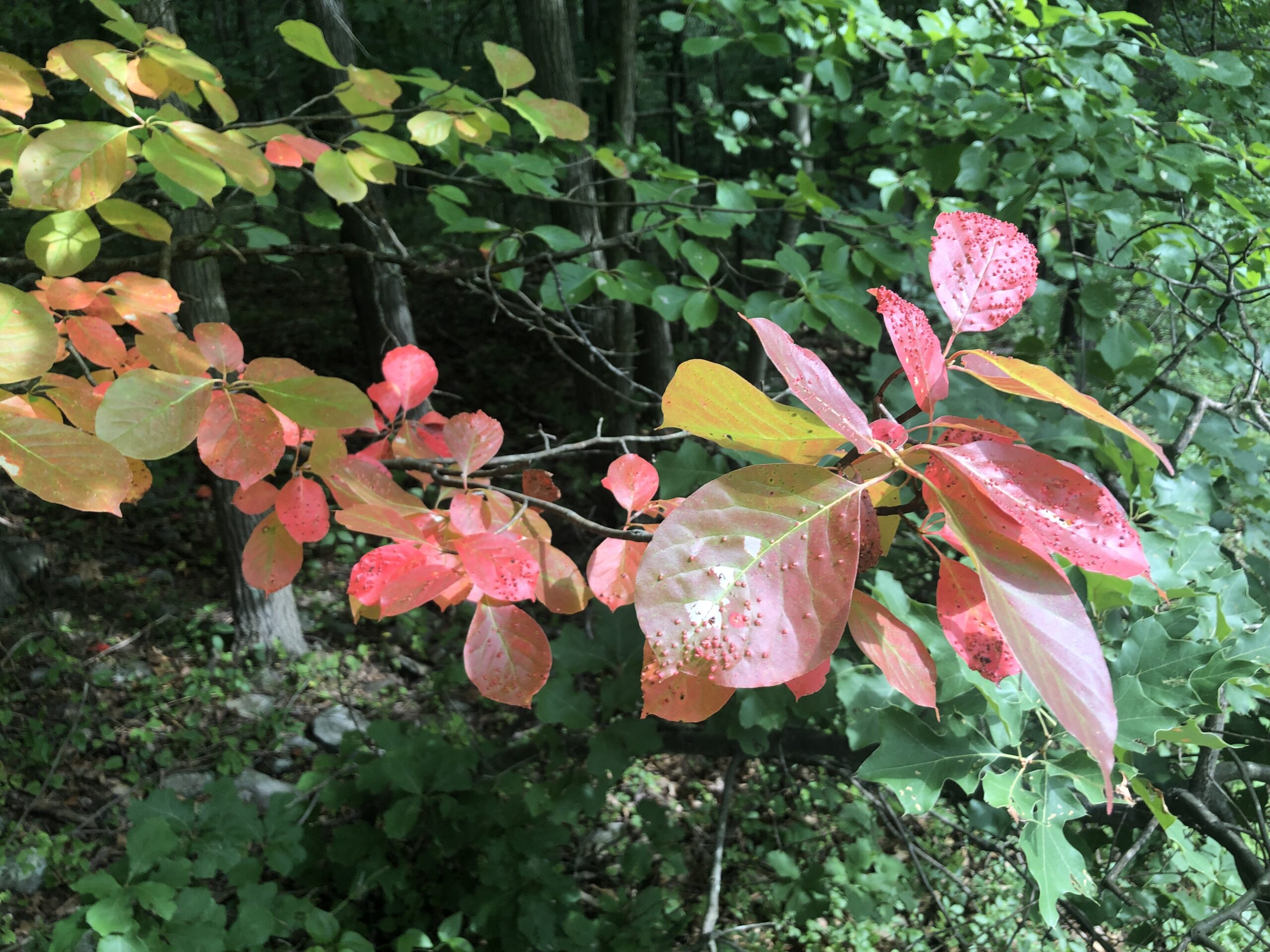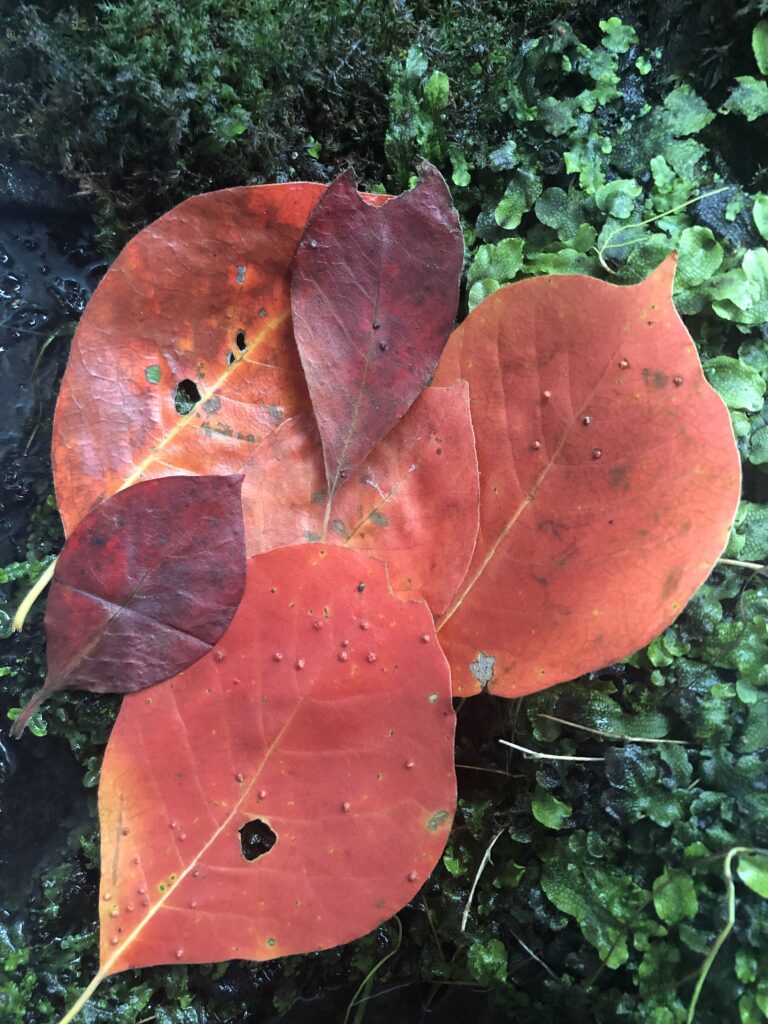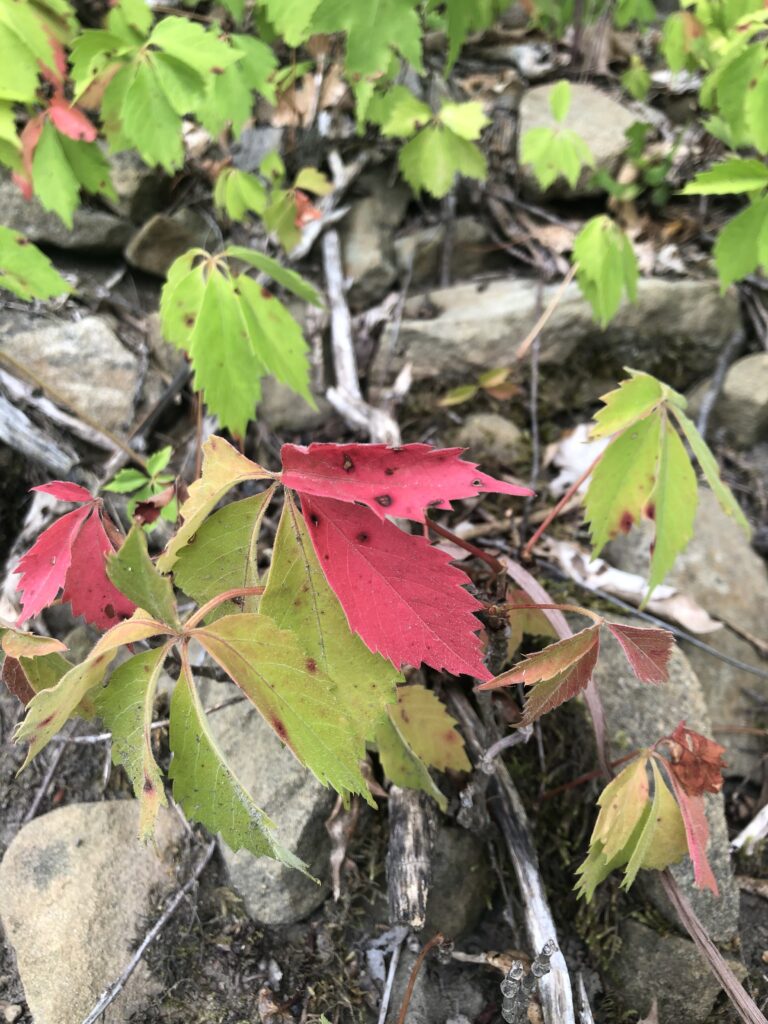
A branch of healthy leaves turning color at the edge of the forest, photographed on July 31.
That’s right, even on August First, not even halfway through astronomical summer (June 21 to September 21), some plants are already indicating they are packing up and getting ready for autumn. The first tree in our area that turns color reliably is Nyssa sylvatica. This tree has a broad range, from Ontario to Texas, and perhaps because of this large range, it has many common names. It is known as black gum, sour gum, and sometimes pepperidge (as in the cracker company). But, the most widespread name for this tree and its close relatives is tupelo.

The name “tupelo” is believed to derive from Native American Creek language meaning “swamp tree” because of the other species of Nyssa that are common in the extensive wetlands of the southeast. The swamp tupelos (Nyssa biflora, N. ogeche, N. aquatica) are typical of the flooded forests where they may live side by side in standing water with cypress trees. Tupelos develop cavities where branches die off and provide important nesting sites for many animals.

Young tupelos seedlings are favored food of white-tailed deer, and the nutritious fruits are important for many animals. Most people find the fruits bitter or sour, but they are used in sweetened preserves. Honey made from tupelo flowers is popular in the South.

Tupelos are not the only native plants that may change color early. Others include Virginia creeper (Parthenocissus quinquefolia), a relative of the grape, and sumac (several species of Rhus), especially where they may be under water stress, as beside a road that is hot in the summer. Other native plants that may be particularly colorful in autumn in our area include poison ivy (Toxicodendron radicans), dogwoods (Cornus florida), and sassafras (Sassafras albidum), but you must wait for autumn to see those.

